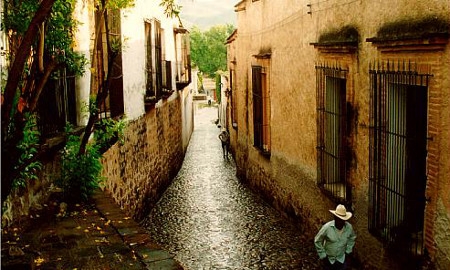And while a combination of such common stereotypes would likely warrant a visit in its own right, the country has long been keen to acknowledge that for all the clichéd characteristics, it’s the oft lesser-known, yet truly enchanting elements of Mexico that really draw people there, and back again.
That is why in 2001 the Ministry of Tourism launched the “Programa Pueblos Mágicos” aimed at promoting a series of towns and villages around the country that imbue a certain distinctiveness, making them unique, historically significant, and serving as a fresh alternative to the incredibly popular tourist resorts such as Cancún.
By drawing attention and value to the quaint and unassuming type of places that lie, at large, in the interior of the country, the “Pueblos Mágicos” look to meet the rising demands of the culturally-aware tourist, offering tradition, beauty and adventure in equally sumptuous measures.
With the programme not only created to highlight the towns that represent the nation’s indigenous past, and that feature the spectacular visual legacy of Spanish colonial influence as well as Mexican traditions, it is also being used as a way to reward citizens in the town for retaining the rich historic culture throughout the generations (tourism being the great driver for socio-economic development that it is).
According to the Ministry of Tourism, a “Pueblo Mágico” is defined as a place with symbolism, legends, history, important events and a unique day-to-day life – in other words, a certain “magic” in its social and cultural manifestations.
And if you thought such a nifty classification was just a clever marketing tool used as a concept in travel guides and promotional campaigns to describe any old Mexican town, think again. The candidate areas have to meet a number of certain criteria to be bestowed with the prestigious honour of a “Pueblo Mágico”.
Each place must have a population of at least 20,000 residents while having fully preserved their beautiful and original architecture. Importantly, it must also be easily accessible by road and be situated within a two-hour drive from a major tourist destination, making it the ideal daytrip destination.
Once a town is chosen, it must then undergo a rigid modernisation procedure in order to ensure that its infrastructure and tourism-related services, like hotels and restaurants, are up to scratch.
Such is the scrupulousness of the government in guaranteeing the tourist that their destination has the sufficient amount of “magic” deemed required; there have been a number of instances where places have had their magic status revoked for not maintaining the necessary high standards.
Furthermore, when San Miguel de Allende was designated a UNESCO World Heritage Site in 2008, it was also removed from the magic list, with the Ministry of Tourism wanting the towns to remain distinguished for their non-mainstream and off-the-beaten-track feel.
With such a wide array of varied locations around the country, each place has truly something different to offer. While some of the towns will likely be recognisable to travellers, like Todos Santos, Taxco and Tequila (the birthplace of the famous tipple), others are distinctly more obscure.
Wherever these little, magical gems can be found, as Mexico’s tourism industry continues to evolve towards the country’s beach destinations and high-end luxury resorts, the “Pueblos Mágicos” are a fantastic reminder of a great colonial past and wonderful small-town charm that has not been, and should never be, forgotten.

0 COMMENTS